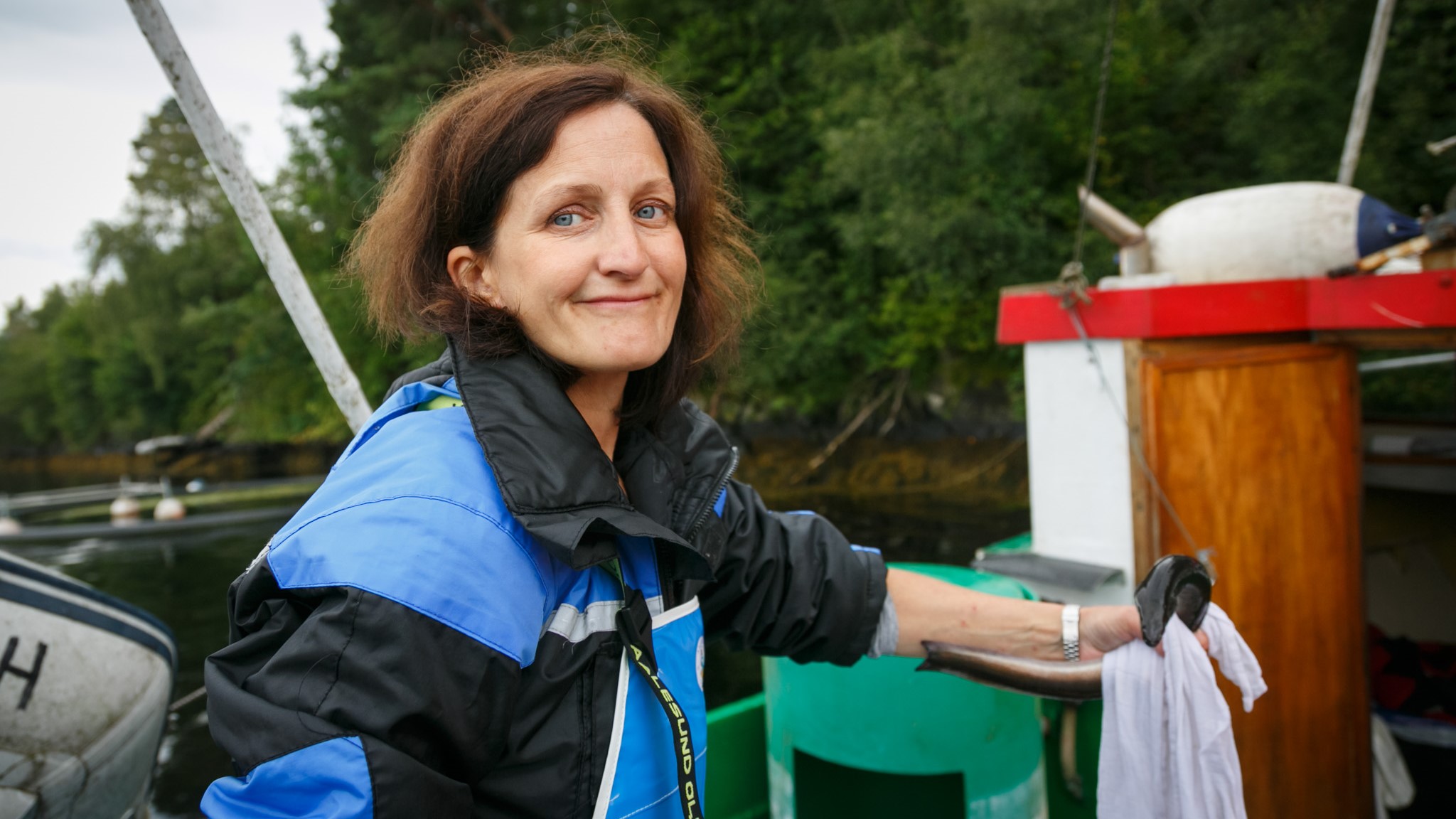Why do eels in Norway choose to stay in salt water?

By analysing their otoliths and parasites, and by tracking the swimming patterns of eels, Caroline Durif will try to ascertain what factors influence whether eels prefer to live in fresh or salt water.
Photo: Erlend A. Lorentzen / HIPublished: 12.12.2017 Updated: 21.08.2018
The European eel is catadromous. In other words, it is born at sea, but migrates into fresh water and remains there for much of its life. In theory.
“But here in Norway find that eels often remain in coastal waters. They aren’t migrating up streams. This is the opposite of eels in Southern Europe. I will investigate what factors influence whether eels prefer salt or fresh water”, says Caroline Durif, who has just gotten word that the Research Council of Norway will fund her research project.
Very little known about eels at sea
There is only one eel stock in Europe, and it is considered critically endangered. This is due to the poor recruitment of juvenile eels (glass eels). In Norway, the eel fishery has been closed since 2010.
“Our estimates of the eel population are largely based on data on eels in fresh water. Very little is known about eels at sea. Having a better understanding of how many eels never migrate into fresh water may change our assessment of the stock. With the EU also discussing limits on eel fishing, it is extra important to have reliable assessments,” she says.
Investing in cheaper methods
Some of the money from the Research Council of Norway will go towards analysing the eel’s “flight recorder”, its otolith. Scientists can use lasers to measure the ratio between the elements strontium and calcium in the otolith, which can tell whether an eel has lived in fresh water.
“This process is complex and expensive. That’s why we’ll attempt to link this ratio with the fatty acid composition of the muscle tissue, in other words with the eel’s diet. Certain parasites can also indicate that an eel has spent time in fresh water. Hopefully, we can find a substitute for the laser technique in the future,” explains Caroline Durif.

This otolith cross-section shows that the eel has lived for 18 years since the glass eel stage. The eel was caught at Flødevigen. (Photo: Caroline Durif)
Durif has experience of developing new methods: the Durif index is widely used by scientists to assess what stage an eel has reached in its sexual maturation. Recently she led a workshop in the International Council for the Exploration of the Seas (ICES) in designing an eel data call, getting member states to collect standardised data on the European eel.
Hand in hand with experimental fishing
For two years the IMR has organised experimental fishing for eels involving a limited number of fishers. The new research project will complement the information obtained in cooperation with the eel fishers, who only fish at sea.
“The experimental fishing has also helped us to build up an important network of people with knowledge about eel fishing. Now I know exactly who to contact for advice and practical help,” she concludes. (See also: Video of Caroline Durif joining one of the enlisted fishermen in the fjords near Bergen.)
 Caroline Durif tagging eels during the experimental fishing this autumn. (Photo: Erlend A. Lorentzen)
Caroline Durif tagging eels during the experimental fishing this autumn. (Photo: Erlend A. Lorentzen)
